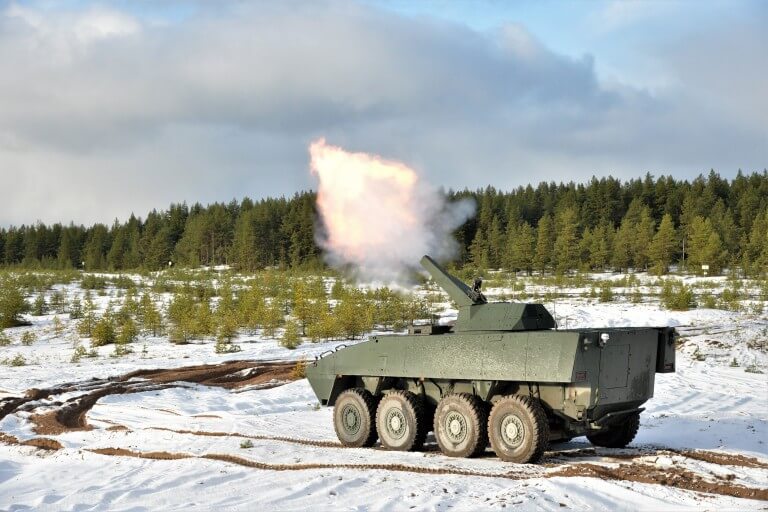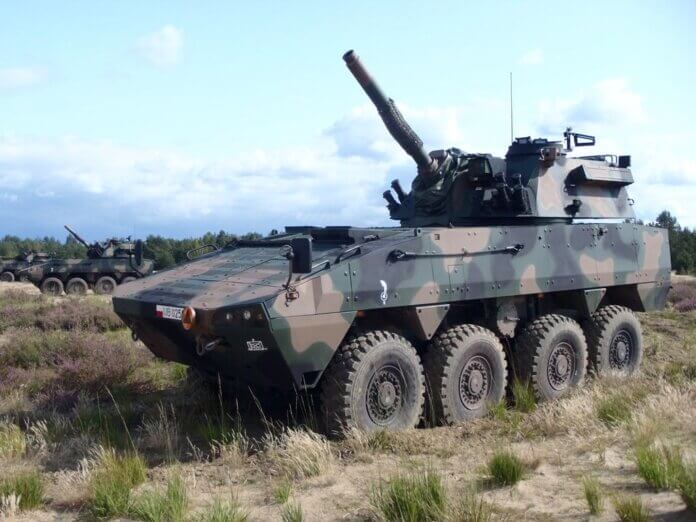Indirect fires, both artillery and mortars, have demonstrated a decisive contribution on the battlefield. These fires have proven most effective when delivered in mass with rounds accurately impacting on the target area either simultaneously or in rapid succession within a few seconds.
Tube and rocket artillery, particularly self-propelled, have been able to master this tactic as the result of their integrated navigation and digital fire controls and having assisted loading. The most common indirect fire asset of forward combat units, the mortar, have largely been unable to match this capability.
However, the introduction of “automatic” heavy mortars offers engagement effectiveness and accuracy equivalent to the most modern artillery, but with the ability to respond to local fire needs much more rapidly. In addition, the “automatic” vehicle mounted mortar also can “shoot-and-scoot” by firing and then immediately moving to avoid enemy return fires on its now disclosed former position. This capability has become especially important with the proliferation of small, unmanned aircraft that are able to detect mortars and other weapons once they fire.
One of the earliest vehicle “automatic mortars” was first displayed in 2007 by the Finnish defence firm Patria. Its twin tube AMOS (Advanced MOrtar System) and single tube NEMO (NEw MOrtar“) used an enclosed turret with a breech loaded 120mm mortar. With full stabilization, automated loading and weapon laying, and on-board position/location integrated with the fire controls these mortars are not only able to fire from a short halt but can deliver accurate fires while on the move.
NEMO has an unmanned turret that facilitates its integration with wheeled and tracked vehicles, on boats, and even rigid containers. It fires all standard NATO 120mm mortar ammunition including high explosive, smoke, illumination, cargo/submunition and precision guided rounds. NEMO can deliver a burst of three rounds in twelve seconds, as well as six rounds simultaneously placed on target able to be automatically calculated and laid by the fire control. The system is capable of not only indirect fires but also direct aimed engagement. An added advantage of the turreted mortar beyond it rapid ten second displacement time is that the crew operates fully under armour unlike open-roof mortars.

Poland’s Huta Stalowa Wola (HSW) has also fielded an “automatic” vehicle mounted turreted mortar the RaK-120. Its autoloader carries twenty rounds, which can include HEAT anti-tank, with a rate of fire of up to ten rounds per minute. The Topaz digital control system includes GPS navigator, a direction indicator, and Talin 2000 inertial reference system Talin 5000. Rak-120 can be operated with only two crew members – the driver and the commander. Both indirect and direct fire is possible, and it is fit with both a thermal sight and coaxial machine gun. Poland is employing them in batteries with accompanying command, reconnaissance, and ammunition resupply vehicles, as well as, linking directly to FlyEye unmanned aerial vehicles.
The most recent “automatic” mortar is the Crossbow from Elbit Systems and was debuted at DESI 2023. Using an unmanned turret, on-board reference and navigation computerized fire controls, and automatic ammunition handling it can be fit to 6X6, 8X8, or tracked chassis. Crossbow is compatible with current 120mm ammunition and the Iron Sling guided round.

With critical indirect fires in jeopardy due to broader surveillance and increasingly accurate counter-fires the enhanced delivery and survivability offered by these automatic mortar systems deserves being given a high priority. Their combination of placing more impacts on target more quickly with their ability to deliver these missions either while moving or a short halt make them the ideal answer for providing reliable, responsive forward fire support.
by Stephen W. Miller













